
30 years PIKO Spielwaren GmbH
Model railway manufacturer out of passion
By Peter Pernsteiner
For 70 years now, PIKO model railways have been produced in Sonneberg in Thuringia. Just about 30 years ago, Ortrun D. Wilfer and Dr René F. Wilfer saved the former GDR company from its ultimate demise. Today, PIKO stands on solid ground and is a key technological player in the model railway industry.
Beginning with the “Pico-Express”
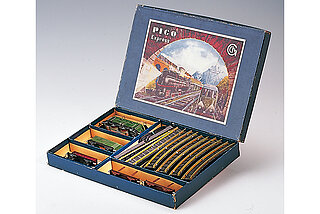
PIKO railways have been around for over 70 years. In 1949, production of the miniature table railway started under the name “Pico-Express”. The seat of the company at that time was in Chemnitz in the former Soviet Occupation Zone, which soon became the German Democratic Republic (GDR). This already hints at the company’s eventful history. Production was moved to Sonneberg in Thuringia in 1952 when the company took over a former Siemens and Halske factory, and Pico turned into PIKO (Pionier-Konstruktion). In 1962, PIKO became part of the company’s name (VEB PIKO Sonneberg), and in 1981, the company was integrated into the “Kombinat Spielwaren Sonneberg” (Sonneberg Toy Collective). Then, the fateful day of 9 November 1989 with the fall of the Berlin Wall and the opening of the border led to the thereupon founded Treuhandanstalt turning the state-owned VEB PIKO into PIKO GmbH Sonneberg.
As chance would have it, 1949 is not only the year in which the Pico-Express model railway was launched, it also happens to be René Wilfer’s birth year. Old child photos of him show him happily playing with gauge H0 model railways. His passion for model railways seems to be something he has had since he was a child: “While my schoolmates dreamed of being train drivers, I wanted to manufacture trains once I was all grown up,” as Wilfer puts it. However, it took until 1992 for him to fulfil that dream.
Ending up an unprofitable company?
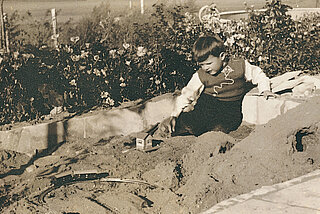
According to the Treuhandanstalt in 1991, PIKO production was to be stopped as it was deemed “unprofitable”. It turned out completely differently, as Wilfer reports: “In 1990, my wife Ortrun and I – the designer and managing director of a manufacturer of model railway buildings – travelled to the former GDR to take a look at the working methods of local toy and model railway stores. We also visited manufacturers of accessories to explore potential business partnerships.” In the year after that, the Wilfers visited PIKO for the first time and got an impression of the production facilities. “We would have had to take over 800 employees at the time and the Treuhandanstalt’s envisaged purchase price was quite extreme”, Wilfer remembers.
When PIKO was still up for grabs in 1992, Wilfer conferred with befriended bankers and presented the Treuhandanstalt with a purchasing offer for the assets of PIKO GmbH Sonneberg in April 1992. According to Wilfer, 30 April turned out to be a real showdown: “After very tough negotiations, we finally managed to come to an agreement just as the final deadline we had agreed on was upon us – it was right before midnight. In addition to paying a high 7 digit sum, I had to guarantee to preserve 80 jobs and pledge to invest multiple million Deutsche Mark into Sonneberg.” This was followed by the official hand-over of the keys to PIKO Spielwaren GmbH, which Wilfer had founded preemptively in April.
Investing in the future
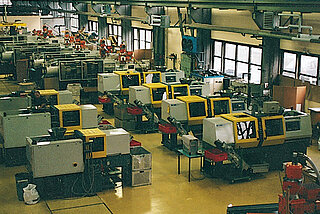
“From the beginning on, my wife and I made it clear to the employees we took over that we not only wanted to restore the PIKO model railway to its former significance but to turn this brand into a truly prestigious product”, Wilfer reminisces. He elaborates: “That is why we renewed the entire plastic injection moulding right at the start. We also invested into a modern CAD system and expanded the pad printing department.”
Wilfer’s wife Ortrun had been working in the design of model buildings in the scale of 1:22.5 since 1986. At the time of the purchase of PIKO, she founded a new company for model buildings in the scales of 1:160 (N gauge), 1:87 (H0) and 1:22.5 (G gauge). “Especially the garden model railway buildings were very popular in a short amount of time – even in the USA,” which Wilfer is still glad about even today. This may be one of the reasons why PIKO already in 1995 started production in the G gauge for the company LGB. This is how locomotives such as the “Oho” and “CASEY” and later on the LCE train in the look of a German ICE as well as various LGB cars came into existence under the umbrella of PIKO. For the event of LGB’s important anniversary in 1998, PIKO also took on the production of LGB starter sets and even the steam locomotive “Stainz” because of high demand, according to Wilfer. “To this day, I am very satisfied that we took over the production of LGB locomotives from Lehmann”, Wilfer affirms, “and am very proud of the fact that we were able to produce the steam locomotive “CASEY” in Sonneberg more economically than the former LGB supplier in Korea.”
PIKO’s own garden railway range
To this day, PIKO still manufactures all locomotives, cars, tracks and model buildings of the garden railway gauge G with a track gauge of 45 mm in Sonneberg – however, no longer for LGB as the company went bankrupt in 2006 and was later on taken over by Märklin. “It would have been a pity to just give up on our many years of know-how on garden model railways,” Wilfer tells us, “which is why it was a simple decision to start our own garden model railway product range with standard gauge vehicles in the scales between 1:26 and 1:29. We presented it for the first time at Spielwarenmesse in 2006.” Since then, PIKO has developed one or two new garden railway locomotives as well as fitting car models. However, according to Wilfer, the garden railway sector collapsed after the insolvency of Lehmann in 2006 and has to this day not been able to recover to its former glory.
Mass production in China
The major gauges H0 (1:87), TT (1:120) and N (1:160) have the most fans, according to Wilfer, which is why the company has been producing locomotives, cars and tracks for those gauges almost exclusively in China for many years –however not in an external factory, but one owned and run completely by PIKO itself. “We figured out very quickly that a job order production model in the Far East was just not going to be good enough”, Wilfer emphasises, “because our customers expect for our models to continue working reliably after many years. If we had not decided already in 2006 to build our own factory in Chashan in the Chinese province of Guangdong, PIKO would probably not exist today. We would not have been able to stay competitive with the products of our competitors, which are also mainly produced in the Far East.”
However, a factory in China is only half the battle, “because otherwise, the high quality we expect from our models could not be guaranteed across the whole series production. That is why in the meantime either my technical manager or I personally visit our factory in Chashan on a regular basis. I myself am not only occasionally in China for a short spell, but often take care of the design of PIKO models personally for multiple weeks at a time.” René Wilfer is currently in China since 21 March 2022 and has even taken on being holed up in hotel quarantine for four weeks in “not the best of hotels”. He plans to stay there until the beginning of June. While he deeply regrets not being in Sonneberg for the occasion of the 30th anniversary of his takeover of the company, he, nevertheless wants to make sure “that our customers are truly satisfied with our products.” In contrast to other companies, Wilfer makes no secret of his factory in China. He rather talks about it openly in vlogs he publishes in the course of his stays in China on the PIKO YouTube channel under the playlist “Dr. Wilfer hautnah”.
More than 600 employees at two locations
The PIKO factory in Chashan currently employs 450 to 500 employees. Every year, more than 100,000 locomotives, over 200,000 cars and far more than one million tracks are manufactured there. A large share of the sales volume produced in China belongs to the gauge H0, the rest is equally divided between N and TT. Wilfer has quite a bit planned for 2020: “In the H0 gauge alone, we want to deliver seven completely newly constructed locomotives and two cars – one of the locomotives will even be available in different international variants. But we are also producing a completely new locomotive in the N gauge as well as two new products in the TT gauge. And don’t forget that we are also going to introduce to the market this year a new locomotive and two new cars for the G gauge which we manufacture in Sonneberg.”
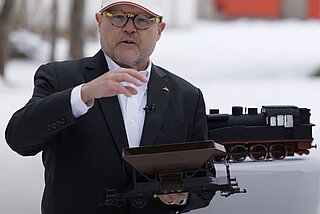
Another thing important to Wilfer is that not only pricey PIKO products for long-time model railway fans are brought to market: “We make sure to consider the next generation when preparing our product range. That is why this year we have, among other things, five starter sets with trains from various railway eras in our novelty catalogue. Including tracks and a controller, they MSRP between 160 and 190 euros. And for our youngest customers we are bringing out clamping brick low side cars for system modules – they will be available in H0 and our garden railway gauge.” Currently, PIKO employs 175 employees in Sonneberg, where the complete manufacturing of the garden railway gauge and accessories as well as the plastic injection moulding takes place. This is also where PIKO’s logistics centre and electronics development department are situated.
Electronics expertise at home
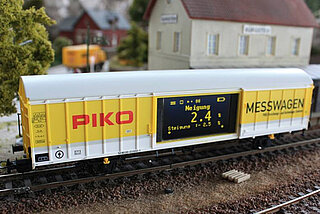
In the past, the company would buy the digital decoders for locomotives elsewhere, as many other model railway manufacturers do – from companies such as ESU, Massoth and Uhlenbrock. “In 2015, we decided that we definitely want to develop our electronics ourselves to finally become independent of the development cycles and in part sluggish reaction times of our suppliers,” Wilfer explains. “And in 2016, we started to create our own electronics design department.” The first innovative result of these efforts was the presentation of an H0 measuring car at Spielwarenmesse 2017. The 184 mm long model of a freight car in the scale of 1:87 can measure not only the speed and distance travelled but also the slope and incline of tracks. The data is not only shown on a display on the side of the car but also transferred to a smartphone app via WiFi. In addition, the car records measurement trips of up to three hours on its on-board memory that can be accessed via USB cable. After the great success of the measurement car in H0, measurement cars in TT and for the garden railway gauge are going to be introduced to the market in 2022.
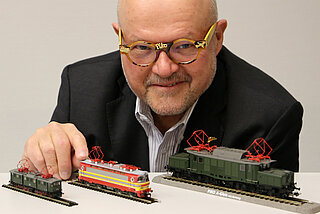
“I am very happy about the fact that since 2022, we have our very own self-designed digital decoder family, the PIKO SmartDecoder XP 5.1, which we have produced by companies specialised in electronics elements in Europe and China,” Wilfer explains. The PIKO SmartDecoder is now available with and without sound for the small models in N, TT and H0 as well as in a high-performance variant for the garden railway models. PIKO also has a fitting programming device and a decoder tester as well as various small components on offer – all the way to motorised movable pantographs for E-locomotive models. PIKO seems to be more than ready for the digital future of model railway technology.
Product group Model Railways and Model Construction
Are you itching for more info on Model Railways and Model Construction?
You can find more information on participating manufacturers in the Model Railways and Model Construction product group at Spielwarenmesse Digital.
About the author:
Peter Pernsteiner discovered his love of technical journalism when studying electrical engineering and joined the editorial staff of a large ICT trade magazine soon after. Since 1994, he has worked as a freelance journalist, focusing on tech topics – including for model railway magazines. In 2016, he also started a YouTube channel for technology reports which has since attracted global attention.



![[Translate to Englisch:] Tunnelbohrmaschine in 1:87 von Faller auf der Spielwarenmesse. (Foto: Pernsteiner)](/fileadmin/_processed_/6/c/csm_20230329_Teaser_35537af20a.jpg)
